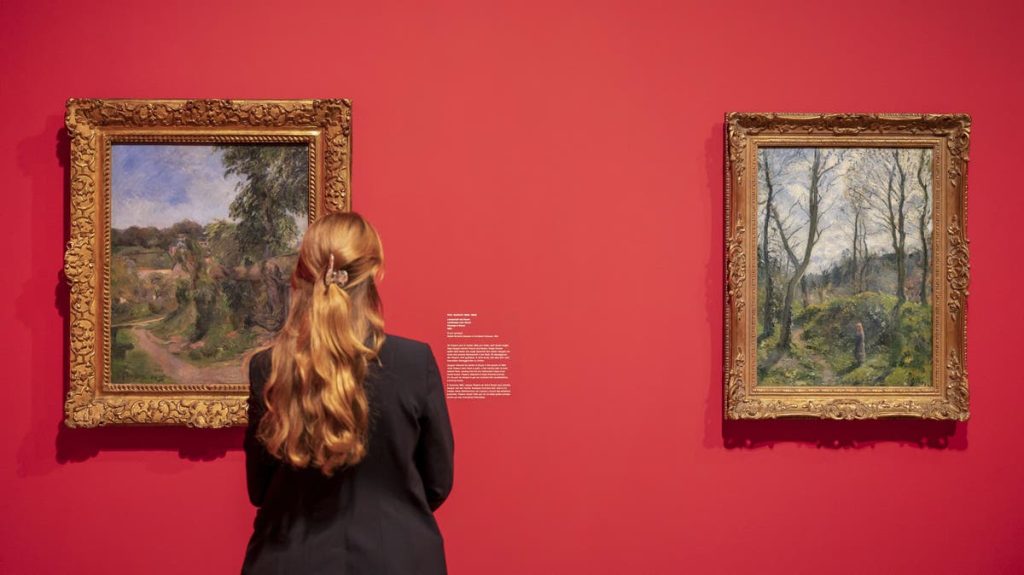Analytics
Understanding Cultural Journalism: Art needs to be seen – but from a distance
The misconception that cultural journalism is part of the cultural landscape is now finding its way into Basel politics. Stop it!
Looking at art as a journalist? Sure – but with the necessary distance.
In the cultural sector, expectations from media workers are alarming in their severity: journalists have to report on events in the form of a review. The media are advertising platforms for important auxiliary cultural workers and journalists.
Unfortunately, out of absolute love for art, it is often forgotten that journalists work not for cultural institutions, but for their readers and an independent medium. We search and ask boring questions and want to understand the connections, categorize them, and pass them on to the outside world. As do journalists from political and economic circles.
tailwind of politics
But many in Basel seem to have a different understanding of the roles. Anyone who asks critical questions of a cultural institution risks being accused of asking “conflict-oriented” questions and not receiving an answer to them. Critical articles about institutions, which are today’s system in politics, are viewed with indignation as an attack from their own ranks.
“I’m not quite sure if everyone understands that a cultural journalist is not synonymous with a critic,” says famed German cultural journalist Petra Kohse. It is crucial to distinguish yourself as a cultural journalist from an observer. Distance is part of our job, even if we want to go to the theater or museum.
However, the mistaken assumption that media professionals are part of the cultural landscape is widespread. Publicity and media scholar Matthias Zehnder represented her at a conference on the topic last year. “Cultural journalism can also be seen as part of culture, and this can make it worthy of funding from a cultural point of view for institutions and the public sector,” Zinder says.
A proposal which is apparently located on fertile land in Basel. “The question is also whether the canton is willing to provide cultural funding indirectly” – that is, through media sponsorship, says Pete von Wartburg, a member of the Liberal Democratic Party Council and director of the Christoph Merian Foundation.
It’s about money
One thing must be clear: as a mediator, we are not responsible for the PR work of cultural workers. Understandably, many creative artists see this differently. For them, review remains the most important form, regardless of criticism.
The explanation is simple: it’s about money. If you want to apply for funding, you must be able to show reviews. The Guide to the Funding Formulas of the Specialized Committee on Dance and Theater for Bastards, for example, identifies “the possibility of public resonance and reception” as a central funding standard. Documenting previous media response serves as evidence.
Art becomes secondary
What does this have to do with cultural journalism?
As journalists, we have become important leaders in cultural institutions when it comes to money, an essential part of the value chain. Technical content becomes secondary. There are hardly any discussions with cultural workers about the revisions. Was our interpretation accurate or completely wrong? This is still a secret. When cultural workers contact us, it is usually because there is no discussion in the newspaper.
The temptation to take the easy route and write reviews and reviews is great. Because the pressure to fill out the newspaper is increasing. Between 2011 and 2018, the number of journalists in Switzerland decreased by 19%, while public relations jobs increased by 16%. This is evidenced by figures from the “Media Quality Yearbook 2018” issued by the Center for Public Research and Society (fög).
Cultural funding or independent research?
The question is who will then wonder about the imbalance of power in theaters? Who sheds light on the source of funding for jazz clubs, and who asks museums how they conduct source research.
These texts specifically are rare in the culture section. A study published by Vogue last year showed that there is a lack of texts and research, especially in the cultural sections. In subscribed newspapers, they account for only seven percent of cultural reporting. If the media also receives money to promote cultural creativity in the future, it will create false incentives.
So anyone who insists on cultural funding should be consistent and not encourage indirect media funding, but openly demand another increase in the culture budget. After all, the mixing of public relations, journalism and independent journalism has nothing in common.

“Explorer. Communicator. Music geek. Web buff. Social media nerd. Food fanatic.”







More Stories
A fossilized creature may explain a puzzling drawing on a rock wall.
MrBeast Sued Over ‘Unsafe Environment’ on Upcoming Amazon Reality Show | US TV
Watch comets Lemmon and SWAN approach Earth today